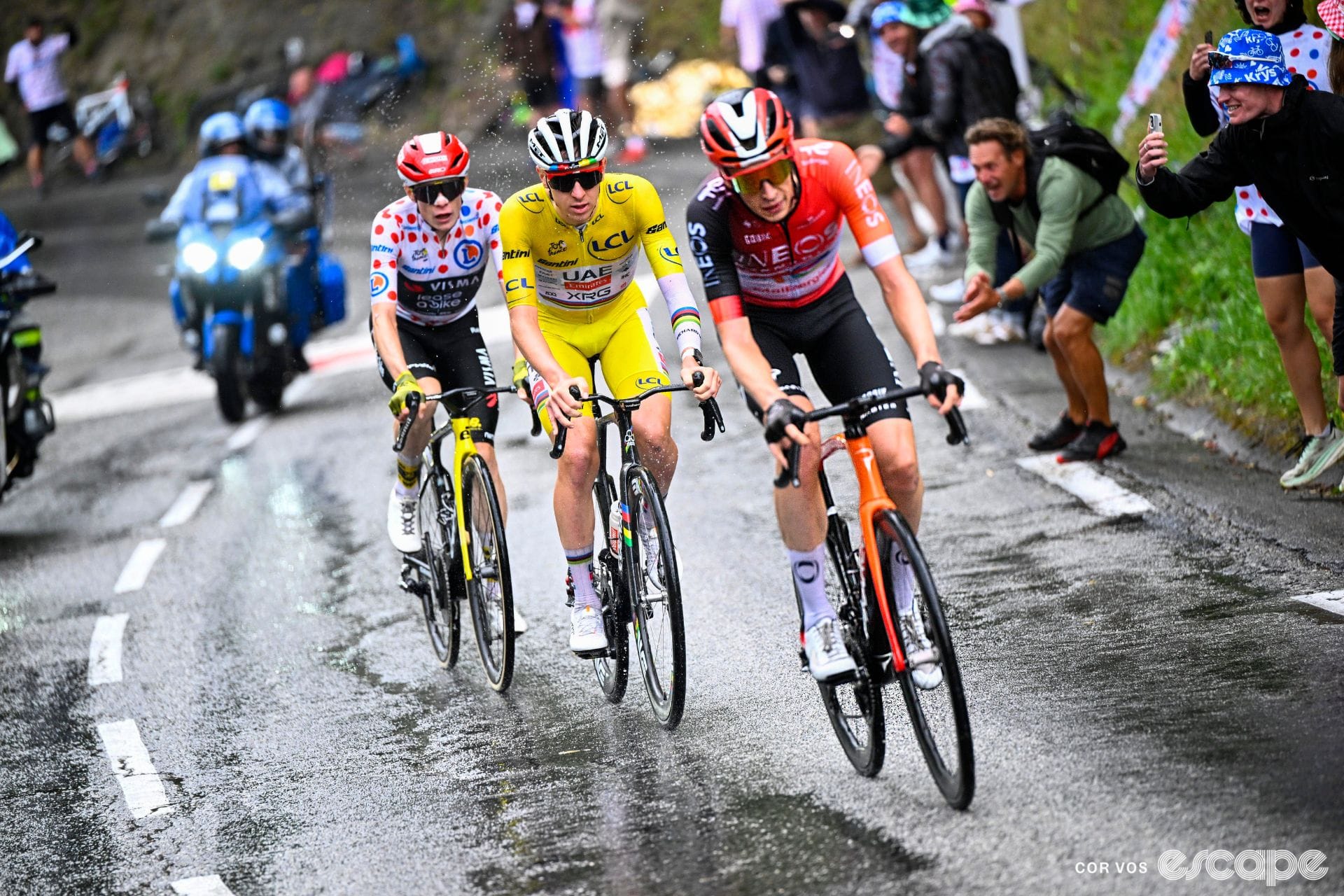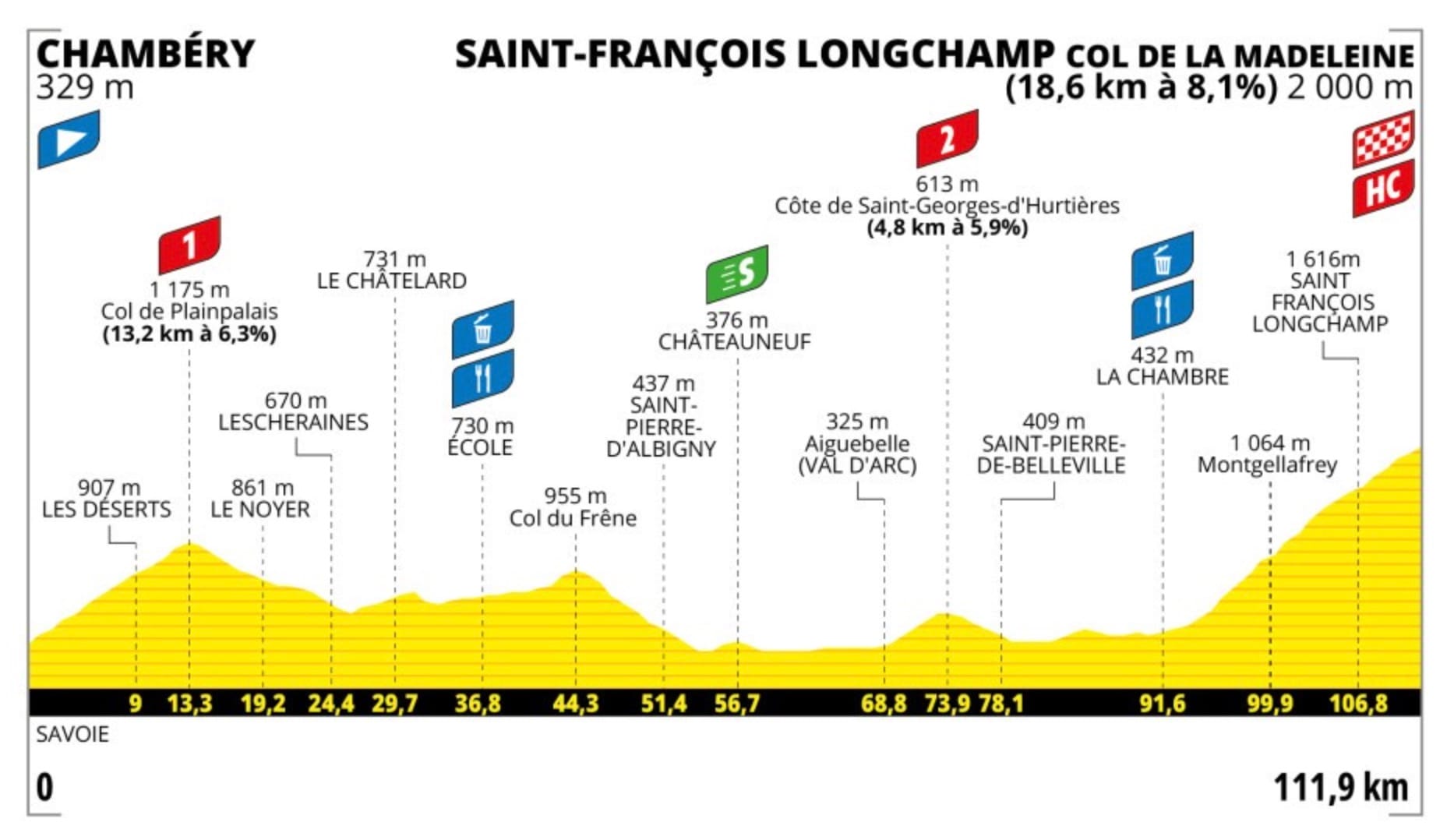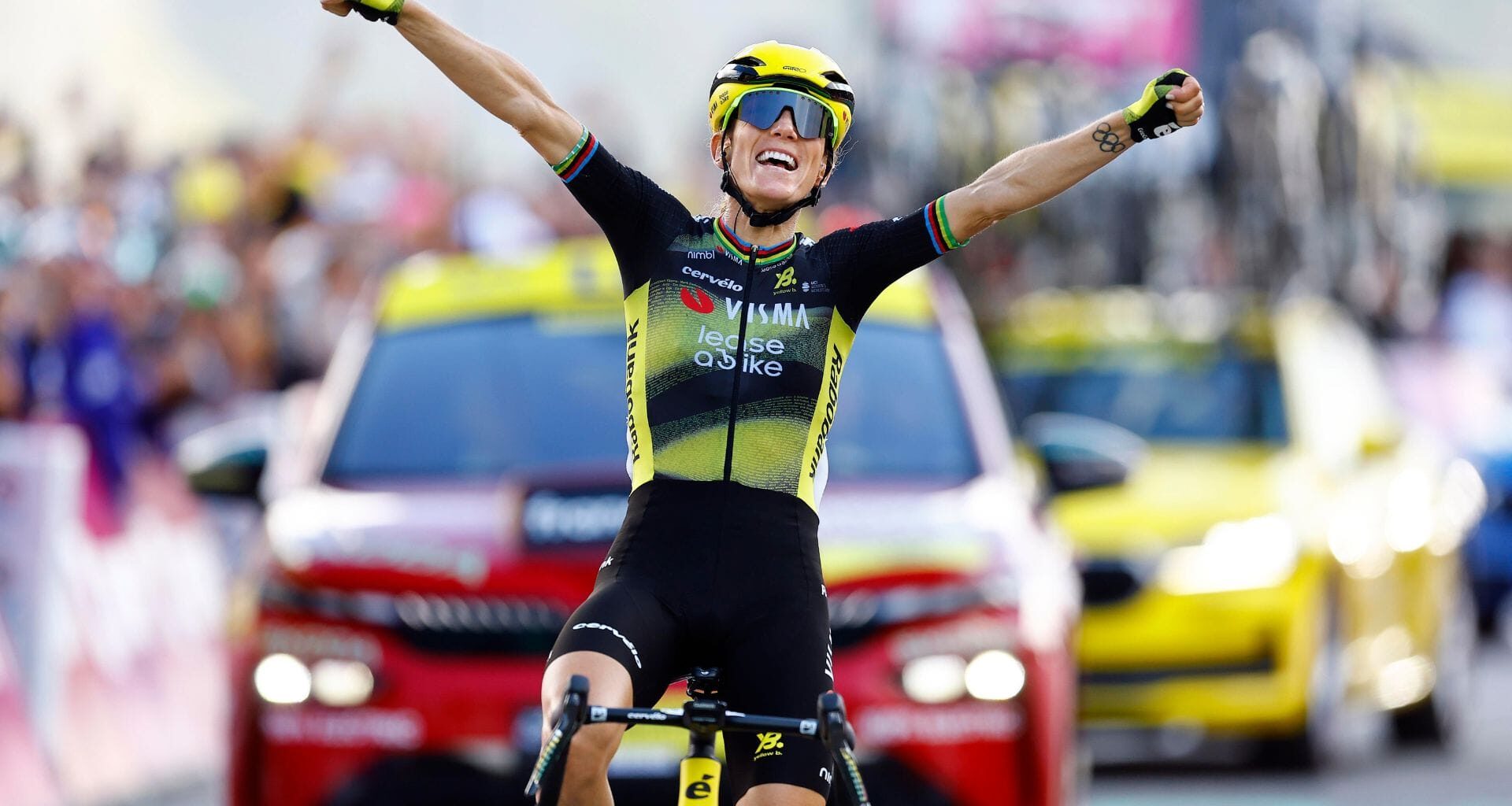
Cor Vos
If you have ever wondered how fast the pros really are, the 2025 l’Étape du Tour de France Femmes gives us a unique opportunity to answer that exact question. The event saw amateur cyclists tackle the same stage as the peloton just hours before them. Same roads, same weather, same route.
Events like this give context around what we see on TV, not just for those who participated in the event but for avid armchair enthusiasts who struggle to assign much real-world meaning to the performances they witness. With the Tour de France Femmes avec Zwift peloton and the l’Étape du Tour Femmes riding the same route only hours apart, we can dive into just how extraordinary these athletes are with a direct level of comparison, well, almost.
Étape vs the Tour: How do amateurs stack up to the pros?
A look at what it means to ride like a pro, and why even the best amateurs can only come close for a single day.

For the peloton, the route from Chambéry to the summit finish on the Col de la Madeleine was the eighth day of racing, and by elevation gain alone, was the biggest test for the GC favourites. Coming off the back of a mountainous Stage 6 and a punchy Stage 7, the riders were far from fresh-faced rolling out of Chambéry.
In contrast, the amateur riders participating in the event had all the time they could want to prepare and freshen up for a single-day event target. For them, taking to the start line was a simple case of rolling out of bed and fueling for the day ahead, with no cumulative fatigue from the past week of intense racing.
Especially with this difference in mind, the context of the performances on display showcases the level of the best riders in the Women’s WorldTour, even when fatigued.
The route
Stage 8 is a mountain test to rival any other queen stage. In 111.9 km, the route gains 3,520 metres of elevation across only three major categorised climbs. Rather than the route being a continuous assault of climbing and descending, Stage 8 packs it all into three distinct sections. Between the start, middle and end, there is a healthy amount of rolling and flat terrain that favoured the peloton over the amateurs of l’Étape Femmes.
Whereas l’Étape du Tour, the event associated with the men’s Tour, sported a course where categorised climbs took up 48.2% of the entire profile, l’Étape Femmes concentrated the climbing. Just 36.6 kilometres (32.7%) are situated on the slopes of categorised climbs, with the final climb of the Col de la Madeleine gaining just over 1,500 metres.

This is a very different test from the saw-tooth profile of l’Étape.
Where a solo rider there had very little disadvantage to riding in a group, the large portion of flat terrain in l’Etape Femmes, especially from the second climb of the day to the Col de la Madeleine, would benefit riders in a large group or a peloton.
For both the pros and amateurs alike, the day started with a rude awakening. Immediately from kilometre zero, the route goes up the slopes of the first climb of the day, the Cat 1 Col de Plainpalais. As tough as this was for the amateurs, for the sprinters in the Tour de France Femmes, this is a brutal start that had them watching the clock and calculating how fast they needed to ride to stay safely within the time limit of the day, which sat at 20% more than the winner’s time.
ClimbCategoryLengthGradient
Col de Plainpalais113.2 km6.30%
Côte de Saint‑Georges‑d’Hurtières24.8 km5.90%
Col de la MadeleineHC18.6 km8.10%
The second climb on the menu is the Cat 2 Côte de Saint‑Georges‑d’Hurtières, at under 6% average gradient. This is a climb that riders could benefit from hiding in the wheels on, something that is a natural advantage to the peloton.
Looming large in the distance as the riders crested the Côte de Saint‑Georges‑d’Hurtières is the final climb of the day. Gaining almost 1,500 metres in its 18.6 km length, the Col de la Madeleine alone represents 42.6% of the total climbing of the stage. It is also the same approach that the men’s Tour de France took on Stage 18, and it is the “harder” side of the col.
Over its 18.6 km length, there is very little deviation in terms of gradient, making it a climb well suited to steady-state pacing, something that benefited the riders of l’Étape, who are riding to a personal best time, rather than necessarily trying to get a time gap over key rivals, like we saw in the GC battle in the race. After a brief lull at the 11 km mark, the climb ramps back to 8% and holds that all the way to the summit.
The amateur contenders
Much like in the l’Étape story from a few weeks back, finding true amateurs to use as reference points is crucial to this story. Something I didn’t do with the l’Étape breakdown was include a benchmark specifically for the first female rider to cross the line from the event. Comparing the pro men to amateur women didn’t feel insightful or useful context.
However, in this example, I have decided not only to include the reference data of the first female l’Etape Femmes rider to cross the line at the top of the Col de la Madeleine from the Tour de France Femmes, but also the first male amateur rider. I included this here to show how fast the Women’s WorldTour is in comparison to any amateur rider of any gender.
As with the l’Etape analysis, I’m using the term “amateur” here simply to mean a rider with no record of competing at a professional level (as defined by having a profile on Pro Cycling Stats). The first riders at l’Etape Femmes to match this criteria were Victoria Stansfield and Tim Alleman, respectively. Stansfield was the first female rider across the line, with a ride that put more than five minutes into the next best woman, whilst Alleman finished fifth, behind four men who are currently or have competed at a high-enough level to have a PCS profile.
Typically, the raw power data we see from female pros is lower than that of the men’s field; however, a large reason behind this is simply weight, where 70-75 kg is a fairly average weight for a pro male rider, the women’s peloton is closer to 55-60 kilos. So while the raw power is lower, pro women can still achieve high W/kg levels.
On its own, these numbers can struggle to find meaning, especially when numbers from the likes of Tadej Pogačar are such outsize benchmarks. But by showing what these power numbers translate to on the road, the speed these athletes travel at and how that compares to both male and female amateurs, it becomes clearer the level that these world-class athletes operate at.
The pro athlete in question for this piece is Sarah Gigante, the AG Insurance-Soudal Team rider finished Stage 8 in second place, one minute and 45 seconds behind winner Pauline Ferrand-Prévot (Visma-Lease a Bike), who also took over the race lead. Importantly, Gigante shared her power data for the stage, allowing us to dive into the efforts of the day in comparison to the gran fondo of the same course.
Climb 1: Col de Plainpalais – 13.2 km at 6.3 %
For the riders at the Tour and l’Etape, the first climb of the day came after 4.7 kilometres of riding. However, the neutral rollout took them to the base of the climb, before the flag dropped and the racing started in earnest.
This post is for paying subscribers only
Subscribe now
Already have an account? Sign in
Did we do a good job with this story?
👍Yep
👎Nope

